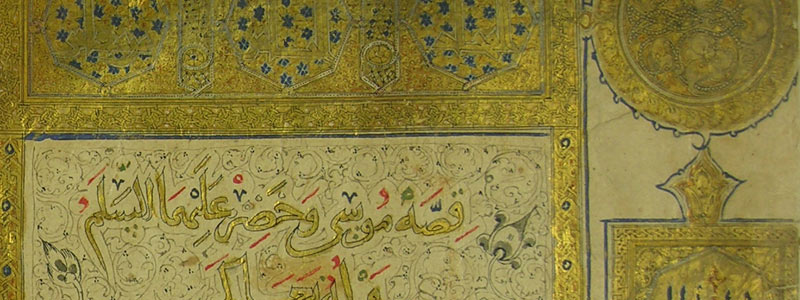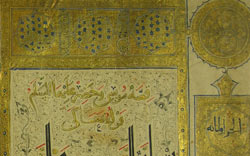‘Osmān b. al-Hosayn lived during the eleventh century. He was one of the most renowned masters of calligraphy and manuscript illumination of his time. The copy of his work featured on this site is from a rare manuscript of Abu Nasr Ahmad b. Mohammad Haddādi's Persian translation and commentary of the Qur'an held at the Topkapi Museum in Istanbul. It is remarkable both for its content and form. Here we have the earliest extant manuscript of the Qur’an with interlinear Persian translation and commentary and the fourth oldest dated manuscript with Persian writing. The form of the manuscript is exceptional for its sheer beauty and gives us a sense of the height of perfection the craft of illumination had reached in the eleventh century. It is also extremely rare to find such mastery of several scripts as well as the art of illumination in a single artist. According to the colophon of the manuscript, ‘Osmān b. al-Hosayn was responsible not only for the calligraphy but also the illumination of the book: “Written and illuminated by ‘Osmān b. al-Hosayn al-Warrāq al-Ghaznavi in the months of the year 481” (or 1091 CE).
Osmān’s reference to himself in the colophon of the book as al-Ghaznavi highlights his affiliation with the Ghaznavid court. Indeed, he was commissioned to produce this manuscript by Ibrāhim b. Mahmud (r. 1059-1099 CE), the fifteenth sultan of the Ghaznavid Dynasty. The title al-warrāq could have several meanings. It was used at this time to refer both to paper merchants and book dealer as well as scribes. Since Osmān’s son, Mohammad, followed in his footsteps professionally, it is possible that ‘Osmān was engaged in all aspects of the book-making trade in his time, ranging from the selling of paper to the craft of illumination, and he passed his trade and craft on to his progeny.
Another example of ‘Osmān’s work survives in the form of a 30-volume copy of the Qur’an of which volumes 1, 4, 5, 6, 22, 25, and 28 are extant and held at the Āstān-e Qods-e Razavi in Mashhad, Iran.



